- Author: Kathy Keatley Garvey
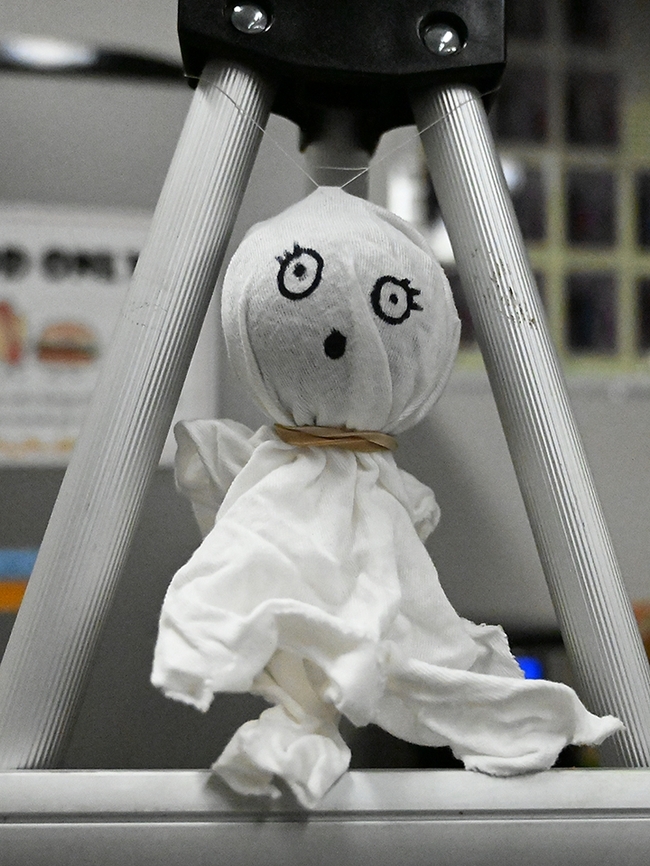
It was the first special event of the fall season.
Scientists answered questions about such wasps as the Asian giant hornet (aka "murder hornets"), pteromalids, and fig wasps and also fielded questions about other insects, including butterflies, moths, beetles, cockroaches, and Jerusalem crickets.
The Bohart Museum, directed by Lynn Kimsey, UC Davis distinguished professor of entomology, is located in Room 1124 of the Academic Surge Building, 455 Crocker Lane. It houses a global collection of eight million insect specimens. It also is home to a live “petting zoo,” comprised of Madagascar hissing cockroaches, stick insects and tarantulas; and an insect-themed gift shop, which includes t-shirts, sweatshirts, jewelry, books, posters and other items. The gift shop is open all year-around and is also online.
The Bohart Museum is open to the public Monday through Thursday, from 9 a.m. to noon and from 1 to 5 p.m., except holidays. (See schedule). More information is available on the website at https://bohart.ucdavis.edu or by contacting bmuseum@ucdavis.edu.
Upcoming special events, all free and family friendly:
Saturday, Oct. 15, 1 to 4 p.m.
Insects, Art & Culture
Visitors will learn about insects through the lenses of art and culture. This event is part of Spirit Week (Oct. 10-16) for Aggie students, parents and alumni, but all are welcome.
Saturday, Oct. 15, 11 a.m. to 11:50 a.m.
Special Talk: Plants, Insects and Art: Mary Foley Benson's Scientific Illustrations
Location: Teaching and Learning Complex (TLC) Building, 482 Hutchison Drive, UC Davis campus
This event is part of Spirit Week for Aggie students, parents and alumni, but all are welcome. Srdan Tunic, a candidate for a master's degree in art history and a Bohart associate, will be highlighting the scientific illustrations of Mary Foley Benson (1905-1992), formerly of the U. S. Department of Agriculture's Bureau of Entomology and the Smithsonian Institution and who later worked for UC Davis entomologists. Much of her work appears on campus. (See research story on the artist by Malcolm Furniss)
Sunday, Nov. 6, 1 to 4 p.m.
Dragonflies Rule!
Dragonflies are described as "the ultimate predator both in the water and the air." Visitors will meet scientists and natural historians who will share information on the world of dragonflies.
Several activities are featured on the daily (Monday through Friday) Bug Squad blog:
- How Do You Say 'Insect' in the Turkish Language?
- It Took Gall to Make a Ghost
- Learning About Wasps and Other Insects
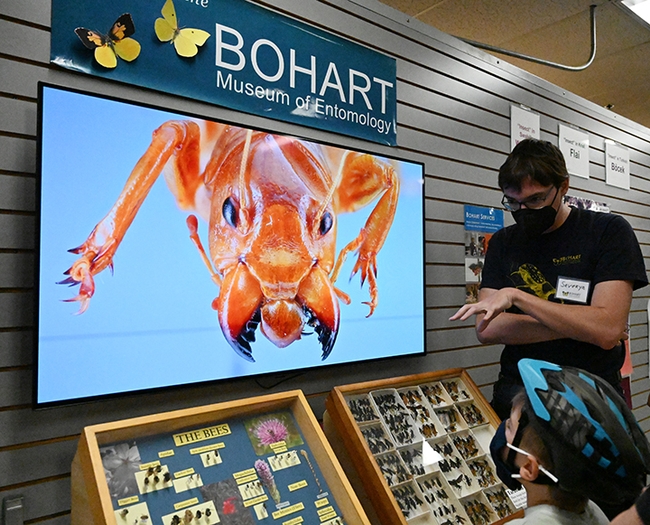

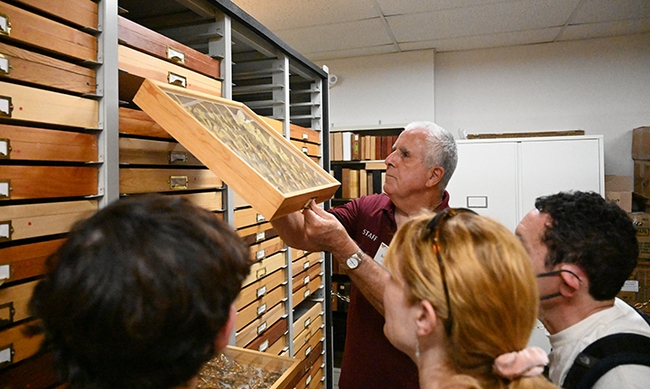
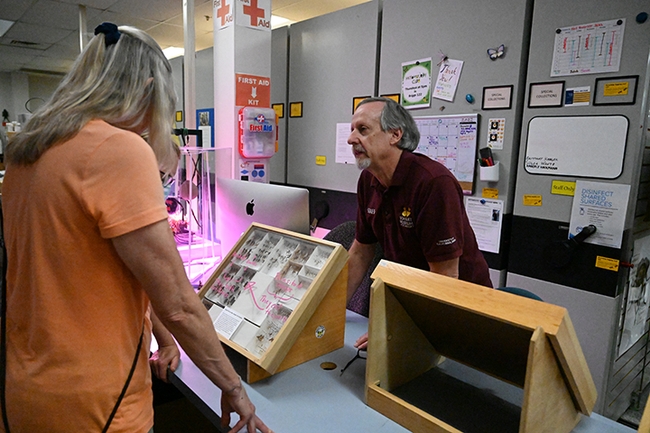
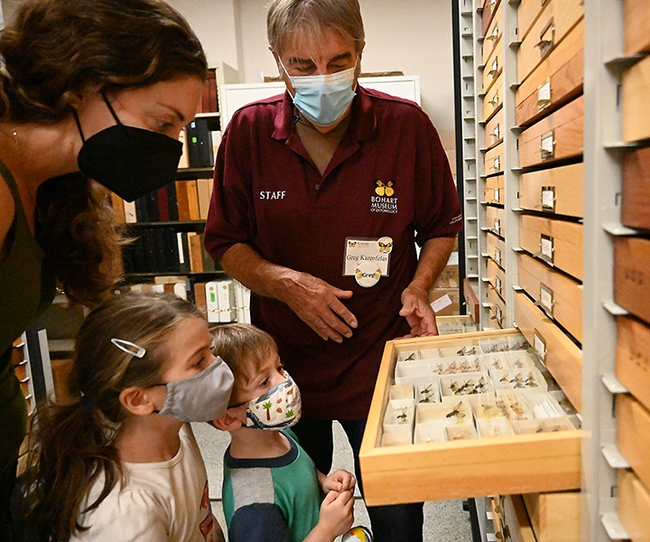
- Author: Kathy Keatley Garvey
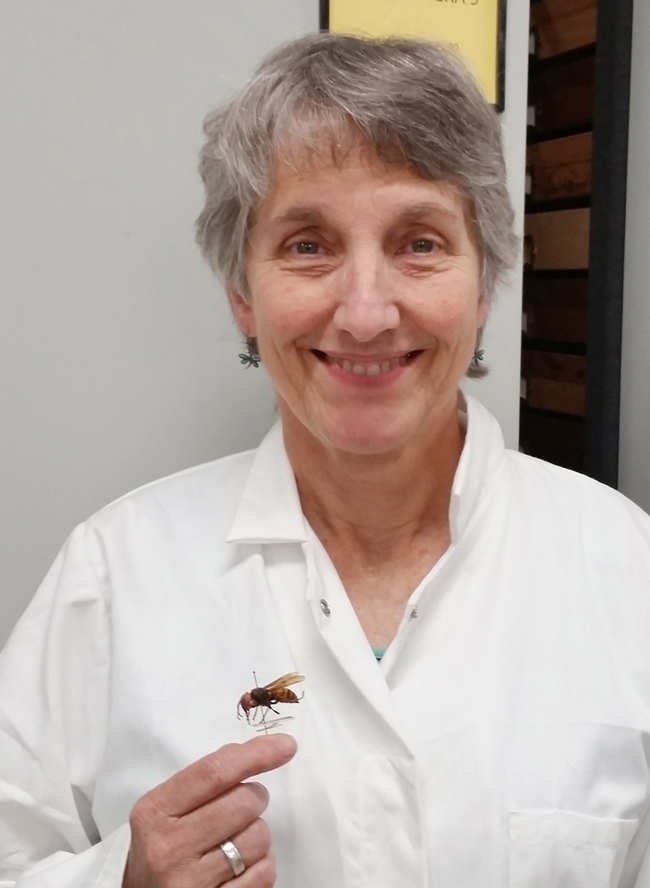
The event is free and family friendly. It is the Bohart's first special event of the fall season.
Visitors will learn about the smallest fairy wasps to the "murder hornets"; what role wasps play in plant galls and figs; and how to distinguish a parasitoid from a parasite. Lynn Kimsey, director of the Bohart Museum and a UC Davis distinguished professor of entomology, will discuss the Asian giant hornet, Vespa mandarinia, dubbed by the news media as “the murder hornet." The Entomological Society of America recently established as its official common name, “northern giant hornet.”
A single colony of the Asian giant hornet was found and destroyed Sept. 18, 2019 in Nanaimo, Vancouver Island, Canada, and a single dead hornet was found Dec. 8, 2019 in nearby Blaine, Wash. Since then, it also has been sighted-- and destroyed--in both Canada and Washington state.
Kimsey, an authority on the giant hornet and a two-term past president of the International Society of Hymenopterist, says the insects probably "hitched a ride" in a cargo box shipped from Asia to a North American seaport. The insect is considered the world's largest species of hornet and can reach up to 2 inches in length. A few hornets can destroy a bee colony, decapitating the honey bees, in a matter of hours.
Kimsey and two other wasp experts published “The Diversity of Hornets in the Genus Vespa (Hymenoptera: Vespidae; Vespinae); Their Importance and Interceptions in the United States,” in the journal Insect Systematics and Diversity in May of 2020. (See https://bit.ly/3BVZ34Y)
Lead author Allan Smith-Pardo, U.S. Department of Agriculture Animal and Plant Health Inspection Service (APHIS), and co-authors James Carpenter of the American Museum of Natural History's Division of Invertebrate Zoology, and Kimsey covered 22 species of hornets, including V. mandarinia.
Fairy wasps, which belong to the family of chalcidoid wasps, are tiny insects that include the world's smallest known insect, with a body length of 0.139mm, and the smallest known flying insect, only 0.15mm. All known fairy wasps are parasitoids of the eggs of other insects.
A family arts-and-crafts activity is also planned at the open house.
The Bohart Museum is the home of a global collection of eight million insect specimens. It also houses a live “petting zoo,” comprised of Madagascar hissing cockroaches, stick insects and tarantulas; and a gift shop with insect-themed items. More information is available on the website at https://bohart.ucdavis.edu or by contacting bmuseum@ucdavis.edu.
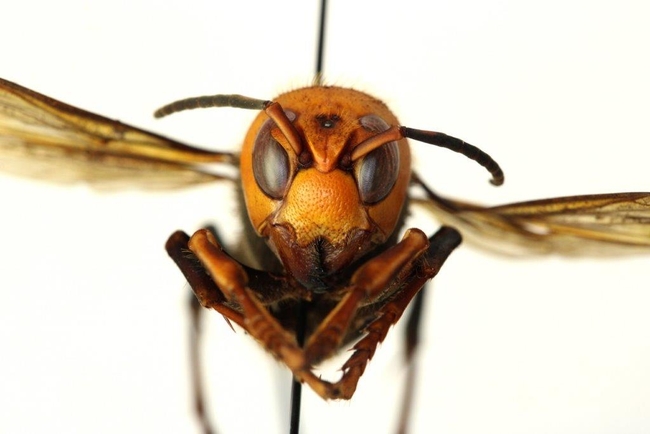
- Author: Kathy Keatley Garvey

Kathy Keatley Garvey, communications specialist for the UC Davis Department of Entomology and Nematology, wrote the news article on "An Amazing Doctoral Opportunity Few Receive,” in March of 2021. The article won the “writing for newspapers” category. (See https://bit.ly/3MfuaLn)
“When five-year-old Rebecca Jean “RJ” Millena entered her kindergarten class in Concord, Calif., she immediately settled on a career choice: entomology,” Garvey began.
“An ‘About Me' poster hanging in her childhood home in Concord confirms it: ‘When I grow up, I want to be an entomologist.'
“She did and she is.”
Millena, who over a two-year-period worked as a student researcher in the laboratory of UC Davis distinguished professor Jay Rosenheim, studied the bizarre Strepsiptera endoparasites that attack their hosts, the Ammophila (thread-waisted) wasps. Millena went on to receive her bachelor's degree in entomology in 2021, and a rare four-year, full-ride doctoral fellowship from the American Museum of Natural History.
While at UC Davis, Millena studied Ammophila specimens at the Bohart Museum of Entomology, which houses a worldwide collection of more than 30,000 Ammophila (among the Bohart's eight million specimens). As larvae, members of the order Strepsiptera, known as “twisted wings,” enter theirs hosts, including wasps and bees, through joints or sutures.
Millena drew information and inspiration from UC Davis alumnus Arnold Menke, a global authority on Ammophila and author of "The Ammophila of North and Central America (Hymenoptera, Sphecidae).
“Strepsiptera are very unusual among parasites in that the parasite is visible on the outside of the host's body,” Rosenheim explained. “The head of the parasite protrudes between the sclerites on the abdomen. Looking across a growing list of species, RJ has shown that Ammophila species where mothers have more extended contact with their young--because they provision their nests with many, small caterpillars instead of one giant caterpillar-- are at much greater risk of acting as inadvertent vectors of strepsipteran parasites to their young.”
“RJ has shown that this one feature explains something like 90 percent of the total variation across Ammophila species in the risk of parasitism,” Rosenheim said. “Ecology virtually never works in such a predictable way; this is one truly exceptional counterexample of nature being highly predictable. Anyway, RJ's work shows that sometimes parental care can be a double-edged sword; we usually think of parental care as providing enhanced protection of offspring from predators and parasites. In this case, it proves to be the reverse.”
Also quoted in the news story was Lynn Kimsey, director of the Bohart Museum and a UC Davis distinguished professor of entomology: “RJ is one of those rare students that is focused, task-oriented and simultaneously creative. She was great fun to have working in the museum.”
Entomology Photo Series Award
Garvey also won the ACE silver award (second-place) for her picture story on “The Flight of the Bumble Bee,” posted June 14, 2021 on her daily (Monday through Friday) Bug Squad blog on the UC Agriculture and Natural Resources website. (See https://bit.ly/3xuoPLN)
Garvey captured in-flight images of a yellow-faced bumble bee, Bombus vosnesenskii, foraging on lupine at Bodega Bay. In her blog, she drew attention to two books: California Bees and Blooms: A Guide for Gardeners and Naturalists (Heyday, 2014), the work of University of California scientists Gordon Frankie, Robbin Thorp, Rollin Coville and Barbara Ertter; and Bumble Bees of North America: An Identification Guide (Princeton University, 2014), co-authored by Thorp (1933-2019), a UC Davis distinguished emeritus professor of entomology.
ACE, an international association of communicators, educators and information technologists who focus on communicating research-based information, will present the communication awards at its 2022 conference, set June 12-14, in Kansas City, MO.

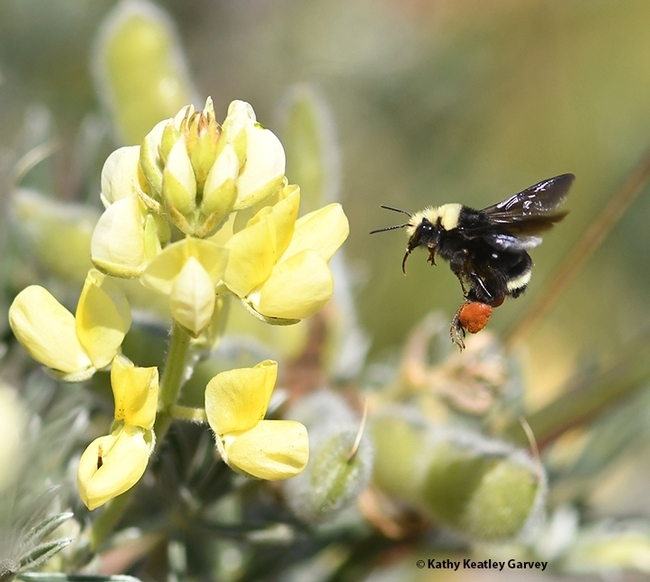
- Author: Kathy Keatley Garvey

Every year the UC Davis Insect Ecology group lists its favorite papers, said community ecologist Rachel Vannette of the UC Davis Department of Entomology and Nematology. She listed the group's favorites on her lab website and also listed her lab's picks.
Menke, who received his doctorate in entomology from UC Davis in 1965, studying with Professor Richard Bohart (for whom the Bohart Museum of Entomology is named), is a noted expert on wasps. Ammophila are sometimes called "thread-waisted wasps" or "sand wasps" but neither is definitive. Ammophila comes from the Greek "sand lover." (See BugGuide.net for images.)
A partial abstract of the Menke publication:
"The North and Central American species of Ammophila are described and a key provided for their identification. Sixty-nine species are recognized, of which 62 are known from North America. The other seven are known only from Mexico. Four new species are described, hallelujah from northeastern California, linda from southern California, mexica and zapoteca from south central Mexico."
Menke is also the co-author of "Funny or Curious Zoological Names." Included in the list: he named a species of Australian wasp, "Aha ha," as a joke. From Wikipedia: "Menke described several years after its discovery how, when he received a package from a colleague containing insect specimens, he exclaimed 'Aha, a new genus,' with fellow entomologist Eric Grissell responding "ha" doubtfully. The name of the insect is commonly found in lists of bizarre scientific names. The name was also used as the vehicle registration plate of Menke's car, "AHA HA."
The UC Davis Insect Ecology list:
- Lonsdorf, E.V., Koh, I. and Ricketts, T., 2020. Partitioning private and external benefits of crop pollination services. People and Nature, 2(3), pp.811-820. https://bit.ly/2XGUrLm
- Nichols, Bethany S., Gerhard Leubner?Metzger, and Vincent AA Jansen. “Between a rock and a hard place: adaptive sensing and site?specific dispersal.” Ecology Letters 23.9 (2020): 1370-1379.? ?https://bit.ly/39r1sVK
- Eberl, F., Fernandez de Bobadilla, M., Reichelt, M., Hammerbacher, A., Gershenzon, J. and Unsicker, S.B. (2020), Herbivory meets fungivory: insect herbivores feed on plant pathogenic fungi for their own benefit. Ecol Lett, 23: 1073-1084. https://bit.ly/3iccPFf
- Larsen, C.D. and Hargreaves, A.L., 2020. Miniaturizing landscapes to understand species distributions. Ecography. ?https://bit.ly/2MV4olZ
- Koski, M.H., MacQueen, D. and Ashman, T.L., 2020. Floral pigmentation has responded rapidly to global change in ozone and temperature. Current Biology, 30(22), pp.4425-4431. https://bit.ly/39zfnZX
- Lundgren, E. J., Ramp, D., Rowan, J., Middleton, O., Schowanek, S. D., Sanisidro, O., … & Wallach, A. D. (2020). Introduced herbivores restore Late Pleistocene ecological functions. Proceedings of the National Academy of Sciences, 117(14), 7871-7878. https://bit.ly/3ilILHm
- Pashalidou, F.G., Lambert, H., Peybernes, T., Mescher, M.C. and De Moraes, C.M., 2020. Bumble bees damage plant leaves and accelerate flower production when pollen is scarce. Science, 368(6493), pp.881-884. ?https://bit.ly/3bGdI7O
- Losapio, G., & Schöb, C. (2020). Pollination interactions reveal direct costs and indirect benefits of plant–plant facilitation for ecosystem engineers. Journal of Plant Ecology, 13(1), 107-113.? https://bit.ly/2XJ3v22
- LeCroy, K.A., Savoy-Burke, G., Carr, D.E., Delaney, D.A. and T'ai, H.R., 2020. Decline of six native mason bee species following the arrival of an exotic congener. Scientific Reports, 10(1), pp.1-9. ?https://go.nature.com/3nJUaSq
- Milet-Pinheiro, P., Domingos-Melo, A., Olivera, J.B., Albuquerque, N.S., Costa, A.C.G., Albuquerque-Lima, S., Silva, M.F., Navarro, D.M., Maia, A.C., Gundersen, L.L. and Schubert, M., 2020. A Semivolatile Floral Scent Marks the Shift to a Novel Pollination System in Bromeliads. Current Biology. ?https://bit.ly/3ihb6yy
- Adams, J.V. and Jones, M.L., 2020. Evidence of host switching: Sea lampreys disproportionately attack Chinook salmon when lake trout abundance is low in Lake Ontario. Journal of Great Lakes Research. ?https://bit.ly/3syTQcT
- Twardochleb, L.A., Treakle, T.C. and Zarnetske, P.L., 2020. Foraging strategy mediates ectotherm predator–prey responses to climate warming. Ecology, 101(11), p.e03146. ?https://bit.ly/3sqZtJR
- Menke, A. S. 2020. The Ammophila of North & Central America (Hymenoptera, Sphecidae). (No link available. This can ordered from the Bohart Museum of Entomology)
- Luttbeg et al. 2020 Safety cues give prey more valuable information than danger cues. Am Nat. 195:636-648? https://bit.ly/2LO3A1Y
- Mathis, K.A. and Bronstein, J.L., 2020. Our Current Understanding of Commensalism. Annual Review of Ecology, Evolution, and Systematics, 51, pp.167-189. ?https://bit.ly/3nG7zuJ
- Simmonds, E. G., E. F. Cole, B. C. Sheldon, and T. Coulson. 2020. Phenological asynchrony: a ticking time-bomb for seemingly stable populations? Ecology Letters 23:1766–1775. https://bit.ly/35I6oVd

- Trunz, V., Lucchetti, M. A., Bénon, D., Dorchin, A., Desurmont, G. A., Kast, C., … & Praz, C. J. (2020). To bee or not to bee: The ‘raison d'être'of toxic secondary compounds in the pollen of Boraginaceae. Functional Ecology, 34(7), 1345-1357. https://bit.ly/2XG0lMz
- Malone, S.C., Weaver, D.K., Seipel, T.F. et al. Herbivore-induced volatile emissions are altered by soil legacy effects in cereal cropping systems. Plant Soil 455, 171–186 (2020). https://bit.ly/3icfYVz
- Derek W Dunn, Stability in fig tree–fig wasp mutualisms: how to be a cooperative fig wasp, Biological Journal of the Linnean Society, Volume 130, Issue 1, May 2020, Pages 1–17, https://bit.ly/2LLjbzb
- Goelen, T., Sobhy, I. S., Vanderaa, C., Wäckers, F., Rediers, H., Wenseleers, T., et al. 2020. Bacterial phylogeny predicts volatile organic compound composition and olfactory response of an aphid parasitoid. Oikos. https://bit.ly/2N25TPn
- Imachi H, Nobu MK, Nakahara N, Morono Y, Ogawara M, Takaki Y, et al. Isolation of an archaeon at the prokaryote–eukaryote interface. Nature. 2020 Jan 23;577(7791):519–25. Available from: https://bit.ly/2XFDzV1
- Prado A, Marolleau B, Vaissière BE, Barret M, Torres-Cortes G. Insect pollination: an ecological process involved in the assembly of the seed microbiota. Sci Rep. 2020;10(1):1–11. https://bit.ly/3oNj9W5
- Pashalidou, F.G., Lambert, H., Peybernes, T., Mescher, M.C. and De Moraes, C.M., 2020. Bumble bees damage plant leaves and accelerate flower production when pollen is scarce. Science, 368(6493), pp.881-884. ?https://bit.ly/2KfKnFP
- Pozo, M. I., , , , , , , and . 2020. The impact of yeast presence in nectar on bumble bee behavior and fitness. Ecological Monographs 90( 1):e01393. 10.1002/ecm.1393
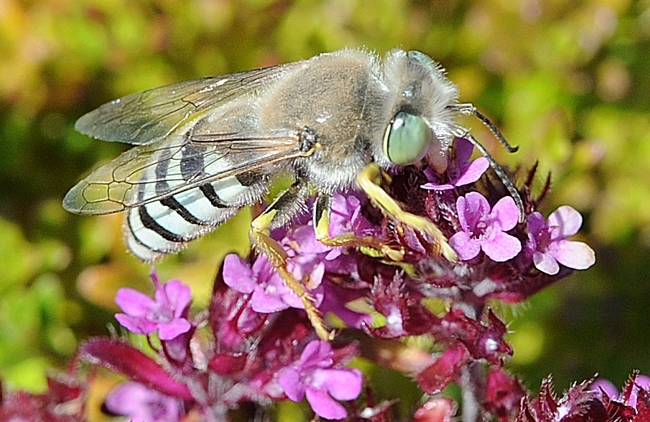
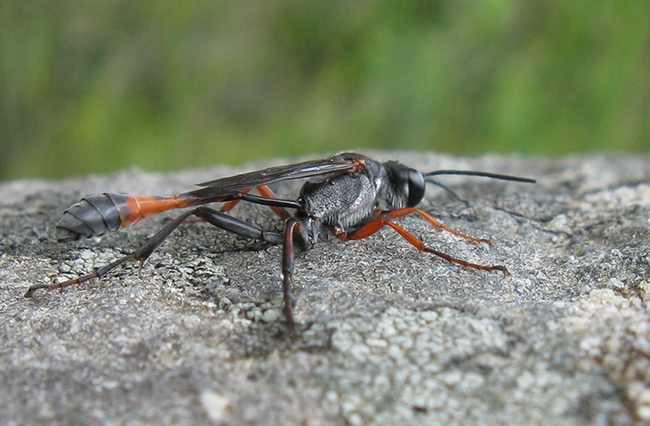
- Author: Kathy Keatley Garvey
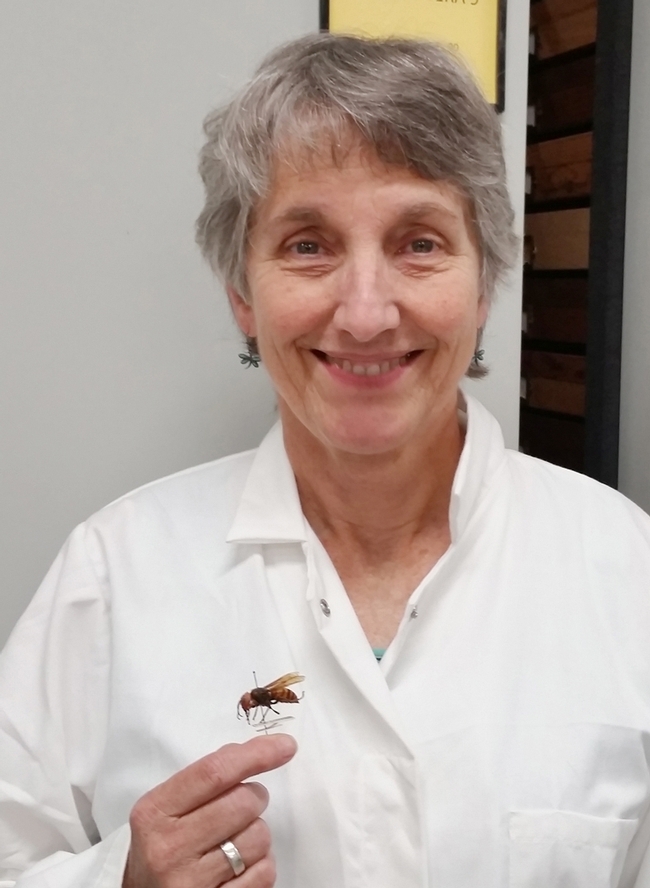
Lynn Kimsey, director of the Bohart Museum and professor of entomology, UC Davis Department of Entomology and Nematology, will answer questions from 11 a.m. to 11:45 p.m. on the Bohart FacebookLive page. It will be recorded for those unable to watch it at that time.
Kimsey, an authority on wasps and bees, is a two-time past president of the International Society of Hymenopterists. The director of the Bohart Museum and executive director of the Bohart Museum Society since 1990, she has also served as interim chair and vice chair of the UC Davis Department of Entomology, now the UC Davis Department of Entomology and Nematology.
She recently won the C. W. Woodworth Award, the highest honor given by the Pacific Branch, Entomological Society of America. (See news story.)
“We thought people would be interested in talking to a wasp/bee expert given all the news about wasps and with spring coming and more people tuning into nature and their back yards due to sheltering in place,” said Tabatha Yang, education and outreach coordinator. “We anticipate ‘murder hornet' questions.
“We host open houses to connect people directly to scientists,” Yang said. “Since the museum is closed at this time and social distancing is required, we are setting this up so people can connect with Lynn. We hope to do this regularly with other scientists, but this will be our first.”
North America's first known colony of the Asian giant hornet, Vespa mandarinia, was detected (and destroyed) in September 2019 on Vancouver Island, British Columbia. A single V. mandarinia was found dead in Blaine, Wash., in December 2019.
Three entomologists, including Kimsey just published research on this and the 21 other known species of hornets in the genus Vespa, in the journal Insect Systematics and Diversity.
The article, “The Diversity of Hornets in the Genus Vespa (Hymenoptera: Vespidae; Vespinae); Their Importance and Interceptions in the United States,” is the work of lead author Allan Smith-Pardo, U.S. Department of Agriculture Animal and Plant Health Inspection Service (APHIS); and co-authors James Carpenter of the American Museum of Natural History's Division of Invertebrate Zoology, and Lynn Kimsey.
The Bohart Museum is also celebrating the birthday anniversary (May 23) of Carl Linnaeus, the father of taxonomy. Linnaeus (1707-1778), was a Swedish botanist zoologist and physician who formalized the modern system of naming organisms. “It's a good time to celebrate biodiversity, scientific discovery, and museum collections,” Yang said.
In addition, talented Bohart student associates have crafted downloadable coloring pages for the family craft activity.
The Bohart also has pre-recorded tours linked to its website http://bohart.ucdavis.edu/


